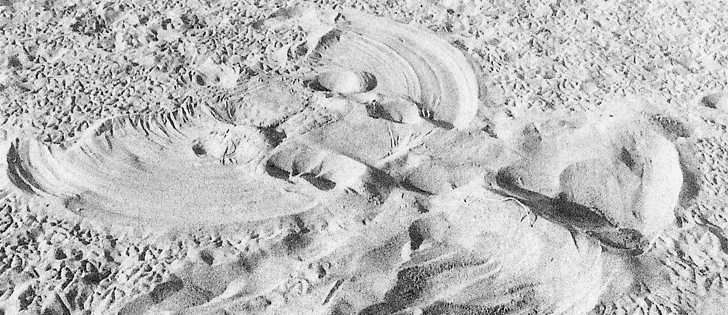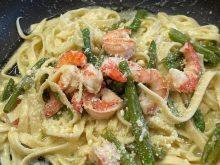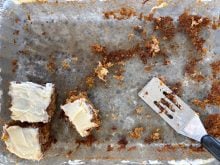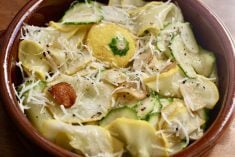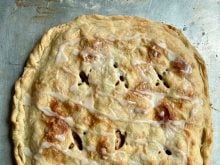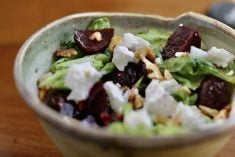Our readers shared their holiday traditions as part of our International Holiday Traditions contest.
Marnie Sholdice of Calgary was selected the winner of a gift basket for her story of how Canadians’ many different ethnic backgrounds make our Canadian culture.
Marnie Sholdice, Calgary
Her husband grew up in a town with many homesteaders, including some who came from Iceland.
His family, like hers, was of British descent and ate items like plum pudding and mince tarts. Her mother-in-law’s sister married an Icelander and soon she was taught how to make vinatarta, a prune cake, by her husband’s family.
Read Also

Fuel rebate rule change will affect taxes and AgriStability
The federal government recently announced updates to the fuel rebates that farmers have been receiving since 2019-20.
When the rest of the family tried the tasty treat, they were definitely on board, and it appeared on the dainty tray every year.
As a new bride, she learned how to make all those layers, and then it became a traditional item on the baking list every Christmas. Her husband now does the honours.
Neighbours have Icelandic and French (Quebec) backgrounds. The wife makes tourtiere, the French meat pie, and Sholdice’s husband gives them vinatarta every year.
We are people from many nations who meld each other’s traditions into our own.
Joyeux Noel, Gleoileg jol.
Karma Goodbrand, Youngstown, Alta.
To help her family stay connected to her Norwegian roots, she bakes round Julekage loaves and serves them with butter and pieces of Jarlsberg cheese. She also loves using Julekage to make toasted ham and cheese sandwiches.
She and her children spend an afternoon before Christmas making Krumkake on an iron that used to belong to her husband’s grandmother.
For Christmas dinner dessert, they spoon red jam and sweetened whipped cream into these shells.
God Jul.
Carol Dunham, Waldeck, Sask.
Her husband is Norwegian and she is German, so lefse was something she had to learn to make for the family to enjoy.
Sharlene Stanley, Pilot Butte, Sask.
The “dreaded fruitcake” is her family’s well-loved Christmas tradition. Her mother started making fruitcake with her mom at age eight. Stanley started helping her mom, whose grandchildren eventually also pitched in.
The grandchildren are now grown and her father, a retired farmer, helps make the fruitcakes.
The family argument is about whether the cakes should be iced. Her mom ices a few but delivers one without icing to Stanley, just the way she likes it best.
Stanley’s grandmother believed “it was a tradition to visit your friends and neighbours during the holiday season to share fruitcake with them and that for each piece of fruitcake that you had, you would have one month of good luck.”
Grandma also made sure her grandchildren learned to love olives, something served only for Christmas and Easter and also given as gifts.
Betty Stanley, Gainsborough, Sask.
Her Scottish grandmother always made shortbread, cut into large thick slabs for serving with tea. She is sure they ate shortbread from November until March.
Nollaig Chridheil.
Naden Hewko, Macklin, Sask.
Her parents immigrated to Canada from Ukraine, bringing with them their traditions of celebrating Christmas as a religious feast day honouring the birth of Jesus Christ.
Her mother always prepared the Ukrainian Holy Eve supper on Christmas Eve, Jan. 6 in the old Julian calendar.
Preparations were started several days in advance as they picked over the syrup pail of wheat for the first dish, kutia, served at Svyata Vechera. The custom was to serve 12 dishes in memory of the 12 apostles and meatless dishes in honour of Mary’s difficult journey to Bethlehem.
The kutia was followed by borsch (beet soup) served with kalach (braided bread). Next in line was fried fish, two kinds of holobchi (cabbage rolls filled with rice and with buckwheat).
After that came two kinds of perogies with mushroom and onion sauce. The perogies were usually filled with a potato-onion and a sauerkraut mixture.
For dessert, her mother cooked dried fruit (compote) with dough based pumpyskies (like a doughnut without the hole) and pershkies (rolls filled with cooked runes and figs).
There was no electricity so the children had to carry in firewood to keep the old cook stove going for her mother, who cooked all the food.
When Hewko married, she adapted the Christmas Eve Ukrainian style supper to Dec. 24 and the traditional turkey dinner to Dec. 25. Her children still prefer the Ukrainian style Svyata Vechera. Now her married granddaughter makes the Ukrainian foods.
Hewko has compiled her Ukrainian recipes into a cookbook so the family traditions can continue.
She buys gluten free perogies and uses quinoa to make kutia for a gluten intolerant granddaughter. Once cooked, it is flavoured with crushed poppy seeds and honey.
Khrystos Razdayetsia.
Evelyn Keyowski, Shellbrook, Sask.
Her childhood memories are of food preparation that started two weeks before Christmas. That included cleaning kutia and grinding poppy seeds for the main dish served at their Sviata Vechera.
She recalled waking up to the smell of kutia slowly simmering on the side burner of the wood stove. Other smells permeated the air later in the day, including cabbage rolls, fried onions, boiled perogies and fried fish.
Setting the table was the sign that the hard labours of preparation would soon be enjoyed.
After feasting on the 12 dishes, the family sang carols until midnight mass. She recalled “pilling in” an older sibling’s vehicle and sitting on each other’s laps.
As a wife, mother, and a grandmother (baba), the family traditions continue. The trip to midnight mass is today more comfortable and the grandchildren find their time with cousins, aunts and uncles much too short.
Bev Sobush-Melby, Midale, Sask.
When she travelled to Norway a few years ago, she experienced the May 17th tradition of Syttende mai day, the country’s independence day.
People dress in colourful traditional clothing (bunads), carry their flag and parade to the church and listen to presentations.
On Christmas Eve, she serves lutefisk, lefse (flatbread) and desserts such as Kringla cookies and Krumkake. Family goes to a Christmas Eve candlelight service at church, then return home to open gifts and sing carols.
Team columnists Sarah Galvin, Jodie Mirosovsky and Betty Ann Deobald wish all of their readers a safe and happy holiday season celebrated in their own traditions.
Betty Ann Deobald is a home economist from Rosetown, Sask., and a member of Team Resources. Contact: team@producer.com.

